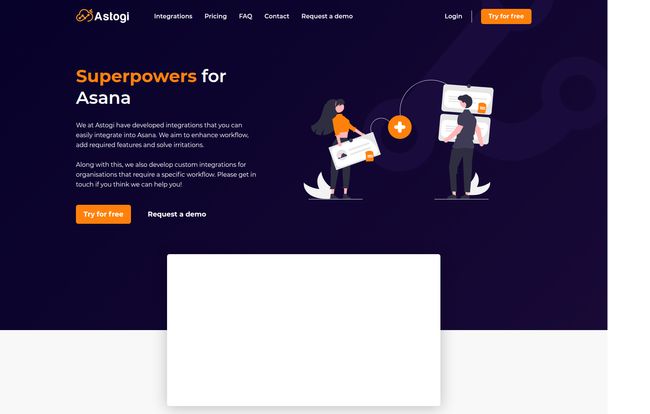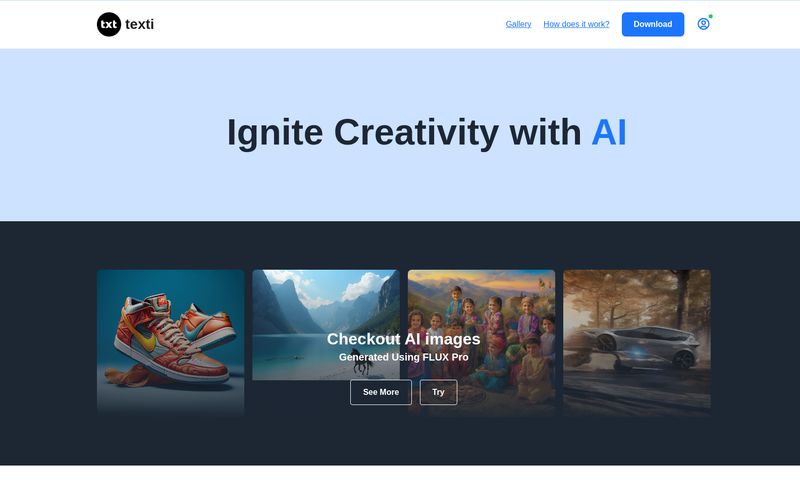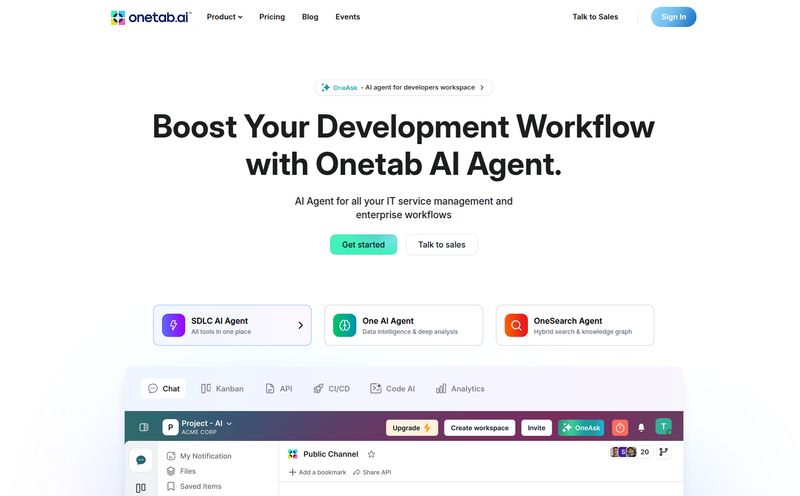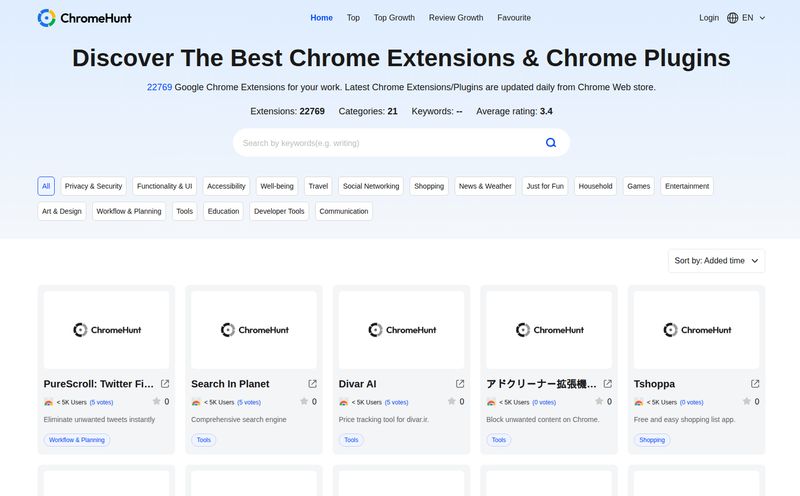We all love Asana. It’s the digital equivalent of that one perfectly organized binder we had in high school. But if you’re like me, and you live inside project management tools day in and day out, you start to see the cracks. The little repetitive tasks that eat up your soul, one click at a time. The manual assignments. The constant context-switching to look something up or draft a quick response.
It’s the digital death by a thousand papercuts. I’ve been there, buried under a mountain of subtasks, wondering if there was a better way. I’ve tried scripts, I’ve tried Zapier zaps that were more trouble than they were worth, and I’ve mostly just resigned myself to the grind. So when I stumbled upon a tool called Astogi, which boldly claims to give “Superpowers for Asana,” my inner cynic just rolled his eyes. “Here we go again,” I thought.
But… I was wrong. I gave it a shot. And I have to say, it’s less of a gimmick and more of a genuinely useful toolkit that bolts right onto Asana. It feels less like a whole new system to learn and more like someone finally added the features Asana should have had all along.
So, What on Earth is Astogi?
Think of Astogi as a specialized performance upgrade for your car. You already have the car—Asana—and you know how to drive it. Astogi is the custom shop that adds a turbocharger, better handling, and a smarter GPS without you having to leave the driver’s seat. It integrates directly into your Asana workspace to automate some of those mind-numbing manual actions and, maybe most impressively, brings the power of ChatGPT right into your tasks.
It’s not trying to replace Asana. It’s trying to make your life within Asana a whole lot smoother. And for teams that are deeply invested in that ecosystem, that's a pretty compelling proposition.

Visit Astogi
The Standout Features That Genuinely Save Time
A features list is just a list until you see how it actually solves a problem. Here’s my breakdown of what Astogi offers and why it actually matters in the day-to-day chaos of managing projects.
Finally, Sensible Auto-Numbering for Tasks
Have you ever tried to reference a specific task in a Slack message or email? It’s a nightmare. “Hey, can you check the ‘Revise copy’ task? No, the other one. The one from last Tuesday.” It’s inefficient and frankly, a bit amateurish. Astogi’s Auto-numbering feature automatically generates a unique, sequential task number (like TICKET-127) for new tasks in a project. It’s so simple, yet so profound. Suddenly, every task has a unique identifier. It’s a small change that brings a massive amount of clarity, especially for support desks, bug tracking, or client requests.
ChatGPT Without Leaving Asana
This is the headliner, and for good reason. The amount of time I've wasted bouncing between my Asana tab and my ChatGPT tab is embarrassing. I’m grabbing task details, pasting them into ChatGPT to ask for a summary or a draft email, then pasting the result back into an Asana comment. It’s a workflow, but a clunky one. Astogi’s “Ask ChatGPT” feature is built right in. You can be on a task, invoke the AI, and ask it to write a task description, brainstorm ideas, summarize a long comment thread, or even translate text. It keeps you in the zone and focused on the work, not on juggling tabs.
Round Robin Assignments That Are Actually Fair
If you manage a team that pulls from a shared pool of tasks—like a support queue, design requests, or content assignments—the Round Robin feature is a godsend. Instead of manually assigning each new task or having a free-for-all where one person gets overloaded, Astogi automatically distributes new tasks evenly among a specified group of team members. It ensures a balanced workload and removes the manager as a bottleneck. Simple, effective, and fair.
Streamlining Teamwork with Aliases and Collaborators
Adding collaborators to tasks one-by-one is tedious. The Team Alias and Team Collaborator functions solve this. You can create an alias, like “@DesignTeam,” that represents multiple people. Or you can set it up so that every member of a specific Asana team is automatically added as a collaborator to new tasks in a project. It’s another one of those “why didn’t Asana just do this?” features that saves a surprising amount of clicks and mental energy over the course of a week.
Breaking Down the Cost: Astogi Pricing
Alright, let's talk about the price tag. Every new subscription has to justify its existence, right? Astogi keeps its pricing pretty simple and transparent, which I appreciate. There’s no hidden fees or confusing credit systems.
| Plan | Price | Best For | Key Details |
|---|---|---|---|
| Free | $0 /mo | Testing the waters | 1 integration or project, 10 tasks/month. |
| Minimal | $29 /mo | Small teams & freelancers | 5 integrations/projects, unlimited tasks, 3-day trial. |
| Team | $99 /mo | Established teams | 20 integrations/projects, unlimited tasks, 7-day trial. |
They also offer a custom plan if you’re an enterprise with bigger needs. In my opinion, the Free plan is perfect to see if you even like the tool. The 10-task limit is tight, but it’s enough to set up one automation and feel the magic. The Minimal plan feels like the sweet spot for small agencies or internal teams who will immediately see the value in time saved. The Team plan is for organizations where Asana is the central nervous system and shaving off even 10% of administrative overhead pays for the tool many times over.
My Honest Take: The Good and The... Let's Say, 'Considerations'
No tool is perfect. Let’s get real. While I’ve been pretty positive, there are things to keep in mind.
On the plus side, the automations are genuinely useful and target real, everyday annoyances in Asana. The ChatGPT integration is a game-changer for workflow efficiency. And the fact that they offer to build custom integrations for organizations is a massive green flag—it shows they’re focused on solving actual business problems, not just selling a one-size-fits-all product.
However, there are caveats. The pricing, while fair, is another monthly subscription to add to the pile. For a solo user, it might feel steep. It’s also completely reliant on the Asana platform. If your company decides to migrate to Monday.com or ClickUp next year, your Astogi subscription becomes useless. That’s just the nature of add-ons. There’s also a potential learning curve for new intergrations, not a huge one, but you'll need to spend an hour or two getting everything configured just right.
So, Who Is This Actually For?
Astogi isn't for the casual Asana user who just keeps a personal to-do list. This tool is built for the power users. It’s for:
- Project Managers who are tired of being administrative assistants and want to focus on strategy.
- Marketing and Creative Agencies juggling dozens of client projects and needing unique identifiers and streamlined assignments.
- IT and Support Teams using Asana as a ticketing system who would kill for automated assignments and numbering.
- Any team that has ever said, “I love Asana, but I just wish it could do [this one specific thing].”
If your team's productivity is directly tied to how efficiently you operate within Asana, Astogi is a serious contender for your attention.
Frequently Asked Questions
- Can I use Astogi if I don't use Asana?
- Nope. Astogi is an enhancement suite specifically for Asana. It integrates with your Asana workspace, so you need to be an Asana user to get any value from it.
- How secure is the ChatGPT integration?
- Astogi leverages OpenAI's official API for the ChatGPT feature. This means data is handled through standard, secure protocols. While you should always check the privacy policy of any third-party tool, this is generally the industry-standard way to integrate AI safely.
- Is it difficult to set up?
- From what I've seen, the setup process is quite straightforward. You connect your Asana account, authorize the app, and then start creating or adding integrations to your projects. The free plan is the perfect sandbox to try this out with zero risk.
- What if I need a very specific automation that isn't offered?
- This is a major strength of Astogi. They explicitly state on their website that they develop custom integrations for organizations. You can contact them with your specific workflow needs, which is a fantastic option for larger teams with unique processes.
- Is the free plan actually useful, or just a teaser?
- It's a bit of both. It's incredibly useful for a trial run. You can set up one key automation on a single project and see the benefits firsthand. However, with a limit of 10 automated tasks per month, any active team will outgrow it very quickly. Think of it as a demo, not a long-term solution.
The Final Verdict on Astogi
After spending some time with it, I can confidently say Astogi lives up to its promise. It’s not a revolution, but it’s a powerful evolution for dedicated Asana teams. It doesn't try to dazzle you with a million features you'll never use. Instead, it offers a small, curated set of tools that solve real, nagging problems. It smooths the rough edges of Asana, automating the boring stuff so you can get back to the work that matters.
If you or your team are bumping up against the limits of what Asana can do out of the box, you owe it to yourself to give Astogi’s free plan a try. It might just be the superpower you’ve been looking for.



